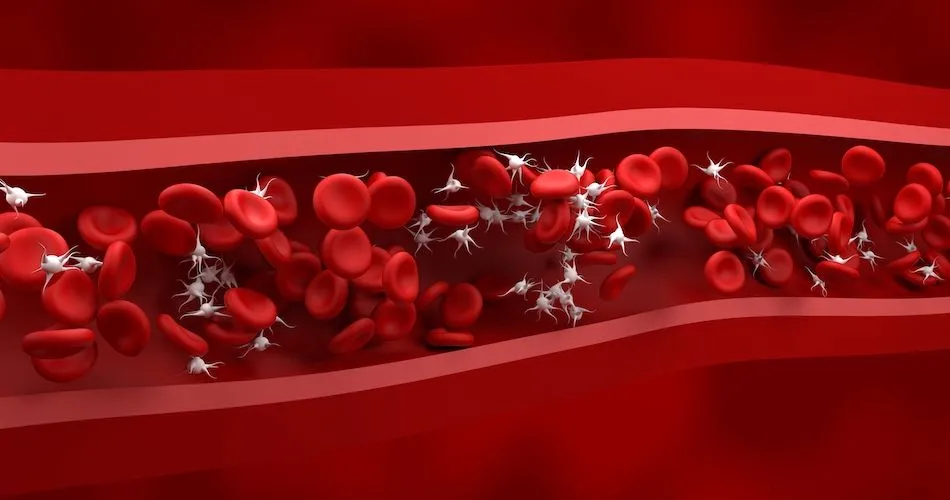ASCO 2024: The MANIFEST-2 Study for Myelofibrosis

Myelofibrosis specialist Dr. Raajit Rampal from MSK Cancer Center and colleagues shared updates from the phase 3 MANIFEST-2 study at the ASCO 2024 conference in June.
Dr. Rampal presented results for the combination of pelabresib and ruxolitinib, which can aid patients with myelofibrosis who have enlarged spleens and anemia.
What is in the Drug Combination Used in the MANIFEST-2 Study?
Pelabresib is an investigational small-molecule drug taken orally that inhibits a family of proteins, decreasing the gene expression believed to be involved in myelofibrosis.
Ruxolitinib is an oral drug in the JAK inhibitor family of medications. It blocks growth factors released by damaged cells in myelofibrosis.
JAK inhibitors are a common therapy for patients with myelofibrosis, providing benefits in terms of spleen shrinkage, symptom improvement and quality of life that can enhance longevity in patients with advanced disease. Although JAK inhibitors have been the mainstay of therapy, they are limited in terms of how long they keep myelofibrosis from progressing. That’s why researchers are testing combinations that can effectively control myelofibrosis while addressing common side effects and symptoms such as anemia and spleen enlargement.
What are the MANIFEST-2 Study Results?
- Patients experienced a significant reduction in spleen size by week 24
- There was a greater improvement in symptoms with the combination therapy
- Regarding anemia, fewer patients with transfusion requirements were observed with the combination therapy
- Fewer adverse effects were reported with the combination therapy versus ruxolitinib alone
To What Conclusions Led the MANIFEST-2 Study?
It’s a phase 3, but the results have been promising. Combining pelabresib + ruxolitinib significantly reduced spleen size and improved symptoms, anemia, and bone marrow fibrosis more effectively than only ruxolitinib. These results support the potential shift to combination therapy for treating myelofibrosis.
How Can You Contribute to Research for Myelofibrosis?
You can also actively participate in research by joining the HealthTree Cure Hub community! A platform that powers life-saving research. If you are interested in participating in or finding a clinical trial, locating a myelofibrosis specialist, or staying informed about updates and conferences on myelofibrosis, you can subscribe to the HealthTree Cure Hub biweekly newsletter.
Source:
Myelofibrosis specialist Dr. Raajit Rampal from MSK Cancer Center and colleagues shared updates from the phase 3 MANIFEST-2 study at the ASCO 2024 conference in June.
Dr. Rampal presented results for the combination of pelabresib and ruxolitinib, which can aid patients with myelofibrosis who have enlarged spleens and anemia.
What is in the Drug Combination Used in the MANIFEST-2 Study?
Pelabresib is an investigational small-molecule drug taken orally that inhibits a family of proteins, decreasing the gene expression believed to be involved in myelofibrosis.
Ruxolitinib is an oral drug in the JAK inhibitor family of medications. It blocks growth factors released by damaged cells in myelofibrosis.
JAK inhibitors are a common therapy for patients with myelofibrosis, providing benefits in terms of spleen shrinkage, symptom improvement and quality of life that can enhance longevity in patients with advanced disease. Although JAK inhibitors have been the mainstay of therapy, they are limited in terms of how long they keep myelofibrosis from progressing. That’s why researchers are testing combinations that can effectively control myelofibrosis while addressing common side effects and symptoms such as anemia and spleen enlargement.
What are the MANIFEST-2 Study Results?
- Patients experienced a significant reduction in spleen size by week 24
- There was a greater improvement in symptoms with the combination therapy
- Regarding anemia, fewer patients with transfusion requirements were observed with the combination therapy
- Fewer adverse effects were reported with the combination therapy versus ruxolitinib alone
To What Conclusions Led the MANIFEST-2 Study?
It’s a phase 3, but the results have been promising. Combining pelabresib + ruxolitinib significantly reduced spleen size and improved symptoms, anemia, and bone marrow fibrosis more effectively than only ruxolitinib. These results support the potential shift to combination therapy for treating myelofibrosis.
How Can You Contribute to Research for Myelofibrosis?
You can also actively participate in research by joining the HealthTree Cure Hub community! A platform that powers life-saving research. If you are interested in participating in or finding a clinical trial, locating a myelofibrosis specialist, or staying informed about updates and conferences on myelofibrosis, you can subscribe to the HealthTree Cure Hub biweekly newsletter.
Source:

about the author
Jimena Vicencio
Jimena is an International Medical Graduate and a member of the HealthTree Writing team. She has a passion for languages and is currently learning Japanese. In her free time, she loves playing with her cats. Jimena is also pursuing a bachelor's degree in journalism.
More on Conferences
Trending Articles
Get the Latest Myelofibrosis Updates, Delivered to You.
By subscribing to the HealthTree newsletter, you'll receive the latest research, treatment updates, and expert insights to help you navigate your health.
Together we care.
Together we cure.
3x Faster.










